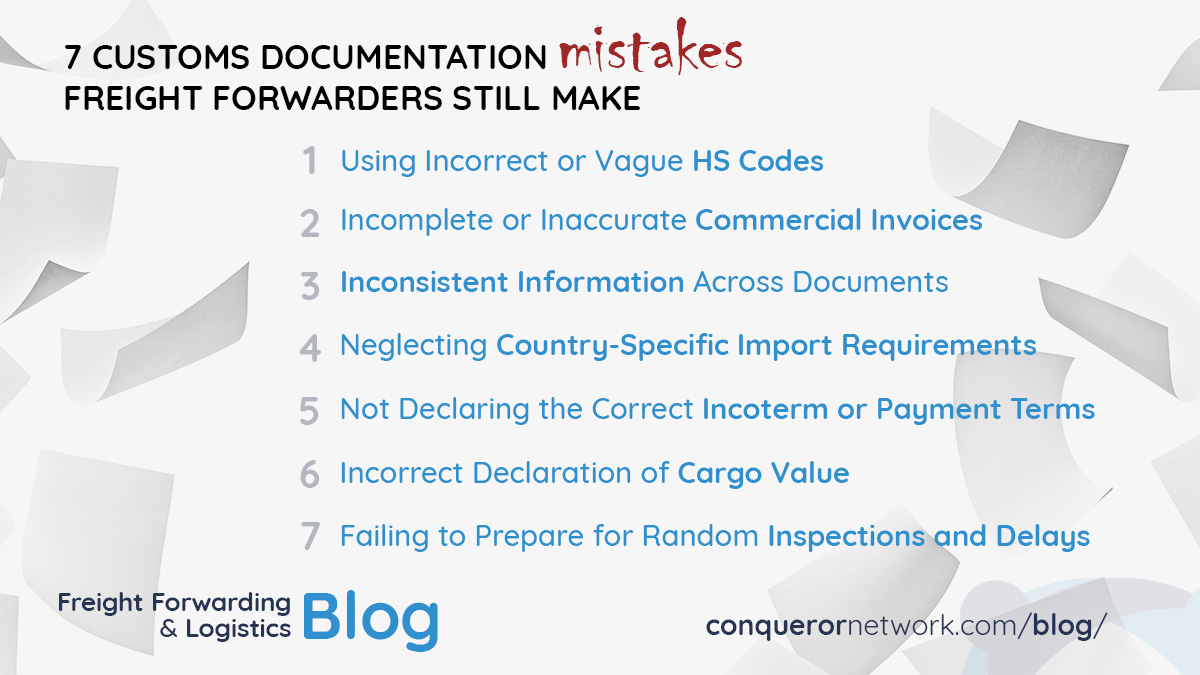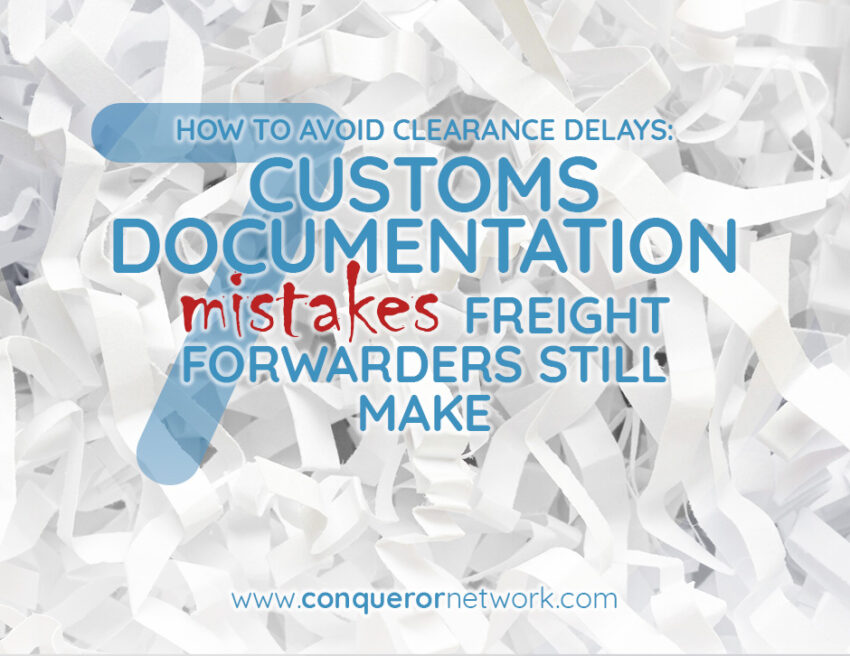For any freight forwarder, customs clearance is one of the most delicate, time-consuming, and error-prone steps in the international shipping process. A single oversight in paperwork can result in shipment delays, unexpected fines, port demurrage, and frustrated clients. While digital tools and growing expertise have made things easier, even experienced professionals still fall into common traps.
This blog cuts through the noise and provides actionable insights into the customs clearance for freight forwarders—including real-world mistakes and how to avoid them. Whether you’re handling a DDU shipment to Rotterdam or a cross-border FCL consignment into Mexico, this checklist-style guide will help you ensure smooth customs processing every time.
Tips to avoid customs clearance delays
1. Using incorrect or vague HS codes can lead to customs clearance delays
Incorrect Harmonized System (HS) codes are one of the most frequent reasons for customs delays. Many forwarders rely on the shipper’s commercial invoice without verifying the accuracy of the HS classification. This creates a compliance risk—if the code doesn’t match the actual product, customs officials can detain or reclassify the shipment, potentially leading to higher duties, penalties, or audits.
Tip:
Always verify HS codes based on the exact material composition, function, and end use. Use the WCO Harmonized System tool or your local customs authority’s classification guidelines. Consider investing in HS classification software or consulting a licensed customs broker, especially for complex or high-value cargo.

2. Incomplete or inaccurate commercial invoices
Customs authorities rely heavily on the commercial invoice for assessing the value, nature, and quantity of goods. Many forwarders unknowingly submit invoices with missing fields, such as INCOTERMS, currency type, or a proper item description, which causes red flags during clearance.
What’s often missing or wrong?
-
No stated Incoterm (e.g., FOB, CIF)
-
Vague product descriptions like “goods” or “samples”
-
No currency symbol (USD, EUR, etc.)
-
Missing buyer/seller information
Avoidance Tip:
Create a commercial invoice template aligned with customs requirements. Educate clients about the importance of invoice accuracy before cargo is dispatched to avoid last-minute document revisions.
3. Inconsistent information across documents can lead to customs clearance delays
This is a surprisingly overlooked issue. If the Bill of Lading, Packing List, and Commercial Invoice show inconsistent product descriptions, weights, or consignee names, it creates doubt for customs examiners. These inconsistencies often trigger physical inspections or clearance holds.
Customs clearance for freight forwarders becomes more efficient when all documents tell the same story—clearly and consistently.
Checklist tip:
Use a document cross-verification system before submission. Many freight forwarders now use digital pre-clearance tools that flag discrepancies automatically before filing.
4. Neglecting country-specific import requirements
Every country has its own unique quirks—document formats, declarations, certificates of origin, product-specific restrictions, or additional documentation, such as fumigation or phytosanitary certificates.
For example:
-
Egypt mandates ACID numbers pre-arrival.
-
India enforces strict BIS (Bureau of Indian Standards) compliance for electronics.
-
Brazil requires an invoice in Portuguese for customs processing.
Tip:
Build a country-specific import compliance database. You don’t need to memorize every regulation, but knowing where to look or who to ask (such as in-network local agents) is key. Networks like Conqueror Freight Network are especially useful here—members can get country-specific guidance from trusted partners.
5. Not declaring the correct Incoterm or payment terms
INCOTERMS are more than shipping jargon—they define who pays for what, where liability shifts, and what documentation is needed at each stage. Omitting them from commercial invoices or misrepresenting them can lead to delays, particularly when local importers are unsure about their responsibilities.
For example:
A DAP (Delivered At Place) shipment that mistakenly follows DDP (Delivered Duty Paid) procedures might result in double payments or clearance rejection.
Use Case:
In customs clearance for freight forwarders, misalignment of Incoterms often causes disputes over who should pay duties and taxes, especially in cross-border B2B shipments.
Solution:
Standardize Incoterm use across your team and verify that all commercial documents reflect the same agreed-upon term. Train your team to explain these clearly to clients too.
6. Incorrect declaration of cargo value
Some freight forwarders under-declare cargo value at the request of shippers to reduce customs duties. This is not only illegal but also dangerous. If customs inspects the cargo and finds discrepancies, it can result in penalties, seizure of goods, or suspension of import/export privileges.
On the flip side, over-declaring can result in overpayment of duties and impact profitability.
Best Practice:
Declare the actual transaction value supported by a formal sales contract or payment proof. Customs officials often verify bank transfers, invoices, or purchase orders, especially for high-value shipments.
7. Failing to prepare for random inspections and delays
Even when everything is in order, customs authorities may randomly inspect cargo. The issue arises when freight forwarders aren’t prepared for these inspections or haven’t built buffer time into the schedule. In temperature-sensitive shipments like perishables or pharmaceuticals, this can cause major damage or loss.
What you can do:
-
Pre-alert clients about potential inspection windows.
-
Have contingency plans for high-risk cargo categories.
-
Coordinate with customs brokers or port handlers who can facilitate quicker inspections.
Pro Tip:
Include buffer days in your shipping plan for high-risk destinations or product categories. You can also opt for customs pre-clearance when available to minimize the likelihood of physical checks.
Wrapping up: Documentation is more than just paperwork
In today’s fast-paced logistics environment, customs clearance for freight forwarders is both an operational necessity and a competitive differentiator. Documentation errors are not just paperwork issues—they’re revenue, reputation, and relationship issues. Forwarders who prioritize document accuracy, country-specific knowledge, and strategic coordination consistently outperform those who rely on guesswork and last-minute fixes. By addressing these 7 common customs documentation mistakes, you’ll not only reduce the risk of shipment delays and penalties, but also build trust and reliability with your clients and partners.


